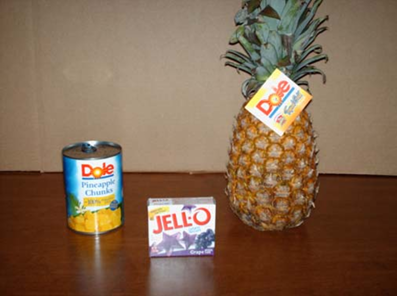
An enzyme is a molecule that speeds up a reaction. In the case of DNA reproduction, enzymes not only speed up the reaction, they are necessary for DNA reproduction.
As you begin to read this activity your body is losing thousands of cells. Your skin alone loses thousands of dead skin cells every minute. If this is the case, why do we not eventually have holes in our skin?
The reason why we can lose so many skin cells every minute and see no effects is because cells reproduce. As we lose skin cells from the surface of our skin, new cells are being produced deep within our skin.
Human cells are constantly reproducing. It is DNA, or deoxyribonucleic acid, that provides the instructions on how to build new cells. In order for a new cell to be created, DNA must first be reproduced. The reproduced strand of DNA can then be used to build new cells. However, if it were not for enzymes, cells would not be able to reproduce at all. Do you know what an enzyme is?
An enzyme is a molecule that speeds up a reaction. In the case of DNA reproduction, enzymes not only speed up the reaction, they are necessary for DNA reproduction.
Recall that DNA is a long strand with a many repeating base pairs. In order for DNA to reproduce, the base pairs must be split apart. One half of the strand is then used as a template to build a new strand of DNA.
The enzyme helicase is responsible for splitting DNA along the base pairs. Helicase moves along the DNA strand unzipping the strand just as a zipper moves along unzipping two sections of clothing. The action of helicase can be seen in the diagram above.
It turns out that enzymes are not just needed for DNA reproduction; they are needed for many common reactions. The digestion of food, absorption of CO2 by red blood cells, and the making of cheese all depend on enzymes.
In this activity, you will see how the action of the enzyme bromelain cuts apart a protein filled substance. Although enzymes are not living, they are active, as you will see in this activity.
In this activity we will:
- See how the enzyme bromelain breaks apart a protein substance
- Understand that enzymes are not living but they actively speed up reactions
- Become familiar with the enzymes associated with DNA reproduction mainly helicase and polymerase.
 Materials
Materials
- Four glasses or small containers to be filled with Jell-O
- 1 small package of Jell-O
- 1 cup boiling water
- 1 cup cold water
- Several chunks of canned pineapple and 2 tablespoons of the juice
- Several chunks of fresh pineapple and 2 tablespoons of the juice
- 1 Tablespoon
- 1 bowl to make Jell-O in
- Refrigerator
- Tape
- Marker
Safety
This activity requires the use of hot water to make the Jell-O. Use caution when making Jell-O, which requires boiling water and mixing it with the Jell-O. Also use caution if you are using a sharp knife to cut fresh pineapple. Ask an adult to help you if necessary.
Preparation
- Obtain chunks of fresh pineapple approximately the size of canned pineapple chunks
- Gather all other materials '
Activity
- Prepare Jell-O by stirring 1 cup of boiling water into one 3-ounce box of Jell-O that has been placed into a bowl. Stir for at least 2 minutes until Jell-O is completely dissolved.
- Stir in 1 cup of cold water.
- Pour Jell-O into four small glasses or containers. Leave containers of Jell-O out until the Jell-O reaches room temperature (~20 minutes).
- Label one container as “Fresh Juice,” one as “Fresh Chunk,” one as “Canned Juice,” and one as “Canned Chunk.”
- Place two tablespoons of fresh pineapple juice in Jell-O in the container labeled “Fresh Juice” and stir well.
- Using a clean spoon, place two tablespoons of canned pineapple juice into the Jell-O in the container labeled “Canned Juice” and stir well.
- Place all four containers into the refrigerator for ~ 4 hours.
- Remove the two containers labeled “Fresh Chunk” and “Canned Chunk.”
- Place a chunk of fresh pineapple on top of the Jell-O in the container labeled “Fresh Chunk” and a chunk of canned pineapple on top of the Jell-O in the container marked “Canned Chunk.”
- Let these containers set for approximately 20 minutes.
- After 20 minutes, return and observe the two containers with the chunks of pineapple. Do you see any differences?
- Now take out the two containers labeled “Fresh Juice” and “Canned Juice.” Compare the two. Do you see any differences?
- Try to make a guess what caused the differences. Hint: pineapple contains an enzyme called bromelain.
Extension Activity
- Bromelain is the enzyme contained in pineapple, can you find any other fruits that contain enzymes.
- Research what Jell-O is made up of and how it is made.
- Determine the function of the enzyme DNA polymerase.
Wrap-Up
In this activity you learned that enzymes speed up reactions. You also learned that enzymes are needed for many reactions to take place. The DNA enzyme helicase unzips the DNA strand so that one side can be used as a template to make a new strand. DNA polymerase is another enzyme that takes nucleotides from solution and bonds them to other nucleotides. Without these two enzymes, DNA reproduction could not take place and we could never replace cells that have died. Thus we would all soon decompose!
In this experiment the action of the enzyme bromelain was used since it could be seen by the naked eye. Bromelain is a collection of protein digesting enzymes called proteases.
Jell-O is made up of collagen, which is a type of protein found in animal bones and skins. When bromelain rich pineapple comes in contact with the Jell-O, it breaks apart the collagen. So why did the fresh pineapple dissolve the Jell-O while the canned did not?
All canned foods are pasteurized. Pasteurization is a process by which foods are heated to a high temperature to kill most of the harmful bacteria or fungi in them. This process also inactivates enzymes since enzymes are sensitive to temperature just as you and I are. The fresh pineapple still contained active bromelain while the canned pineapple’s bromelain was inactivated. That is why you saw the differences that you did.
All fruits contain enzymes. The class of enzymes called pectolytic enzymes digest pectin as a fruit ripens. The fruit papaya is well known for containing the enzyme papain.
Resources
http://en.wikipedia.org/wiki/Gelatin_dessert
http://en.wikipedia.org/wiki/Pasteurized
Activity PDF: dna_reproduction.pdf

